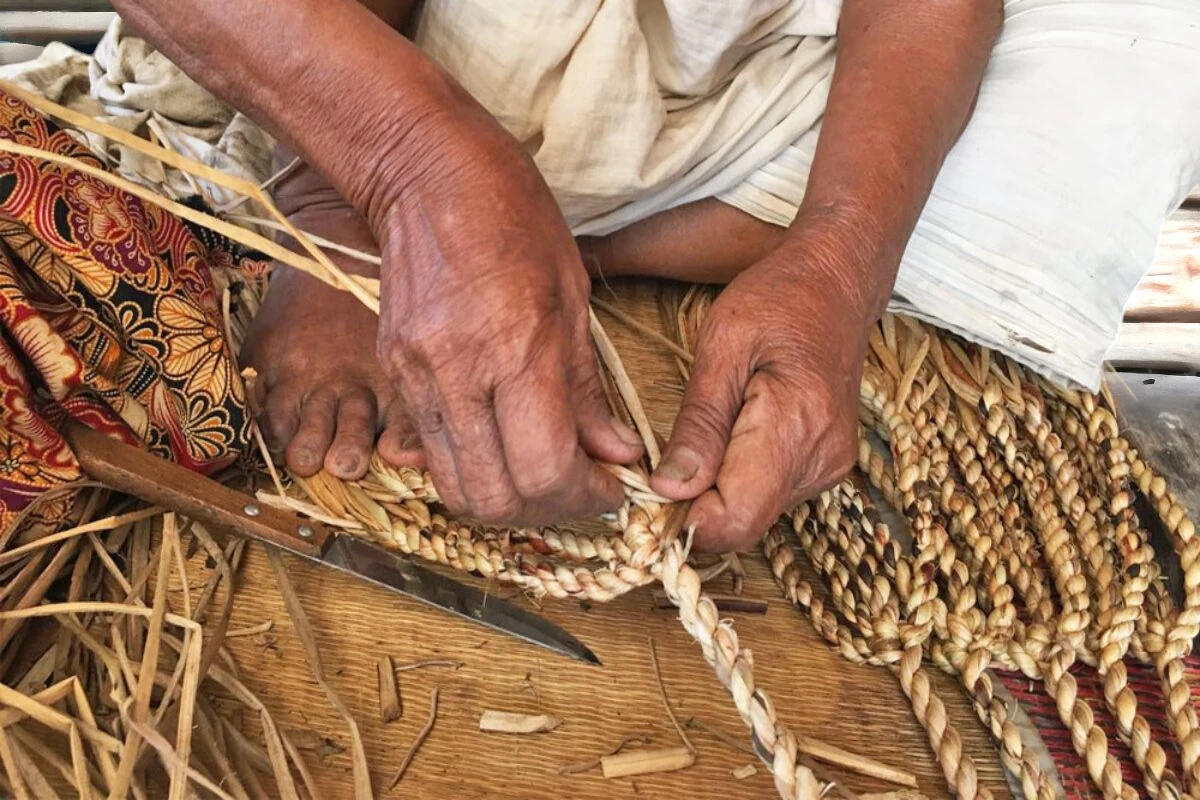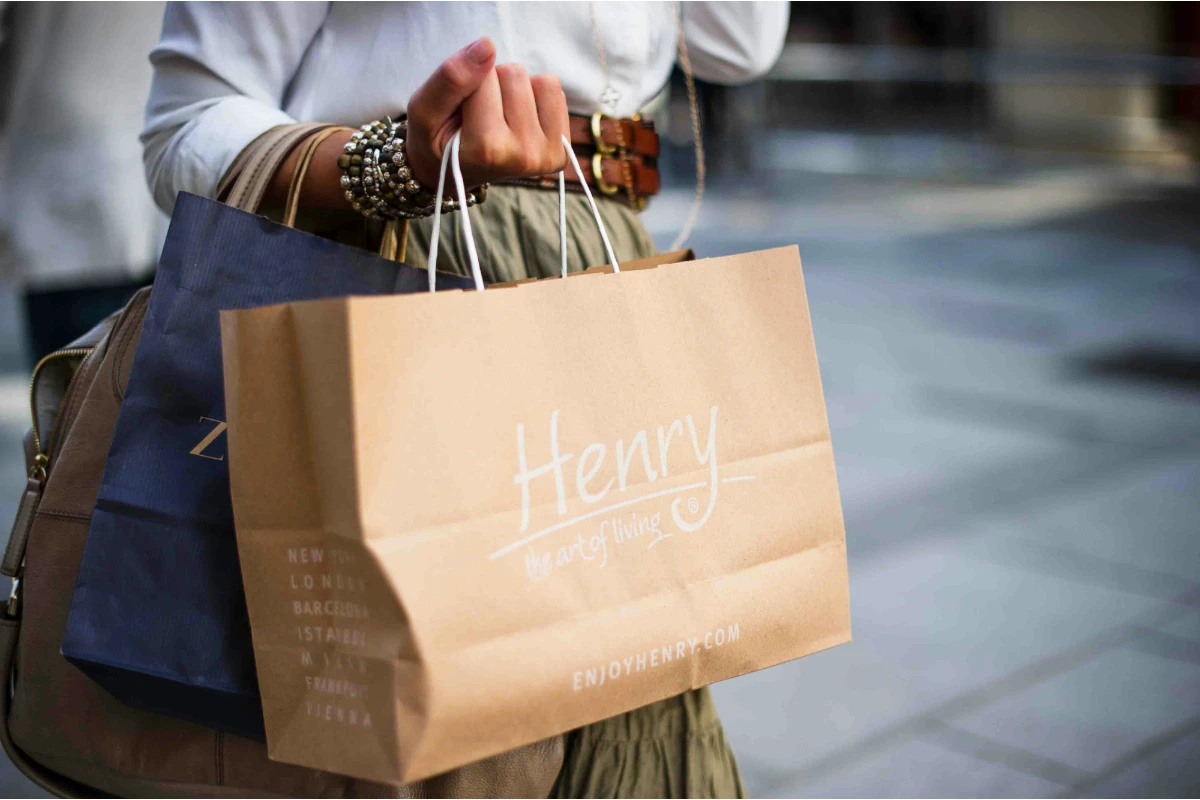Introduction:
Water hyacinth baskets and straw bags are crafted from a natural and fast-growing aquatic plant—water hyacinth. Once considered a nuisance to waterways, this versatile plant has undergone a remarkable transformation over the past decade, emerging as a sustainable resource for producing various homewares. Artisans, particularly in Northern Thailand, harness the potential of dried water hyacinth stalks, delicately weaving them into beautiful products using a variety of weaving styles.
In the lush landscapes of Northern Thailand, a remarkable transformation unfolds as artisans harness the potential of the water hyacinth plant, once considered a nuisance to waterways. This fast-growing aquatic plant has emerged as a sustainable resource for crafting exquisite homewares, including straw bags. From its harvest to the delicate weaving process, each step in the journey showcases the artistry and ingenuity of Northern Thai artisans.
Water Hyacinth Plant and Harvesting Process:
Nurtured by the fertile soils and abundant waterways of Northern Thailand, the water hyacinth plant flourishes; it has vibrant green leaves and delicate purple flowers dotting the landscape. Harvesting occurs during the plant’s peak growth season, typically in the warmer months when the plant is abundant. Artisans carefully select mature plants, harvesting their stalks with precision to ensure sustainability and minimal disruption to the ecosystem.
Drying Process and Dyeing:
Once harvested, the water hyacinth stalks undergo a meticulous drying process, basking in the sun’s warm embrace until they reach the perfect moisture level for weaving. This crucial step not only ensures the durability of the final products but also sets the stage for the vibrant transformation that awaits. With the dried stalks prepared, artisans skillfully dye them using natural pigments, infusing each strand with vibrant colours. From earthy tones inspired by the surrounding landscapes to bold hues that reflect the spirit of Thai culture, the dyeing process adds an extra layer of beauty to the finished straw bags.
As the sun sets over the peaceful waters of Northern Thailand, the legacy of water hyacinth weaving continues to thrive, blending sustainability with artistry in perfect harmony. From the plant’s humble origins to the hands of skilled artisans, each straw bag tells a story of craftsmanship, innovation, and reverence for nature’s abundant gifts. As consumers embrace these beautifully crafted creations, they not only adorn their lives with elegance but also contribute to the preservation of the environment and the livelihoods of artisans in Northern Thailand.
In the heart of Northern Thailand, amidst verdant landscapes and vibrant communities, a centuries-old tradition of weaving thrives. From the nimble hands of artisans to the rich tapestry of cultural heritage, weaving styles in this region encompass a spectrum of techniques, each bearing the mark of intricate craftsmanship and timeless artistry.
Weaving Styles:
Dive into the world of weaving styles, where threads of tradition intertwine with innovation to create stunning textiles and homewares. From the delicate intricacies of handloom weaving to the bold geometries of basketry, each style tells a story of cultural identity and creative expression.
Exploring Diversity:
Come on a journey through the fantastic weaving styles of Northern Thailand, where every pattern and motif reflects the unique heritage of its creators. Whether it’s the rhythmic repetition of a traditional loom or the meticulous intertwining of natural fibres, each technique offers a glimpse into the rich tapestry of Northern Thai craftsmanship.
From Tradition to Innovation:
Discover how weaving styles have evolved over generations, blending traditional techniques with contemporary influences to create modern masterpieces. From ancient patterns preserved through oral tradition to cutting-edge designs inspired by global trends, weaving in Northern Thailand continues to evolve, bridging the gap between past and present.
Celebrating Artistry:
Join us as we celebrate the artistry and ingenuity of Northern Thai weavers, whose skill and creativity breathe life into every textile and homeware. Through their dedication and passion, they preserve a cultural legacy while forging new paths forward, ensuring that the tradition of weaving remains vibrant and thriving for generations to come.
Tradition Straw Bag Weaving Styles:
Amidst the tranquil landscapes of Northern Thailand lies a rich tapestry of tradition, where the art of weaving transcends mere craft to become a cherished cultural heritage. At the heart of this tradition are the timeless techniques of straw bag weaving; each style is intricately woven with stories of generations past and the vibrant spirit of Thai craftsmanship.
From the rhythmic clack of looms to the deft hands of artisans, the journey of traditional straw bag weaving styles unfolds, revealing a world where every stitch is imbued with meaning and every pattern tells a tale. Join us as we embark on a journey through these hallowed traditions, exploring the intricate weaves and vibrant colours that define Northern Thai culture.
Rolled Weave:
The rolled weave stands as a testament to meticulous craftsmanship, boasting the highest production cost among water hyacinth weaving styles. Artisans carefully roll water hyacinth stalks around a core material, creating a sturdy and elegant weave. This technique lends itself well to the storage and organization of items such as baskets and hampers.
Twisted Weave:
Twisted weave, with its mesmerising patterns, follows closely in terms of production cost. Here, artisans intertwine multiple water hyacinth stalks to form intricate designs. The resulting products, ranging from decorative vases to functional storage solutions, showcase the versatility of this weaving style.
Rice Nut Weave:
Characterised by its tight construction and exceptional durability, rice nut weave ranks third in terms of production cost. Artisans twine two water hyacinth stalks together, creating a weave that resembles rice grains. This weaving style finds its application in a variety of home decor items, including storage boxes and pet beds.
Arrow Weave:
Arrow weave, often paired with braided weave due to similar production costs, embodies traditional craftsmanship. Artisans skillfully twin two water hyacinth stalks to create arrow- or fishbone-like patterns. This versatile weaving style is utilised in an array of products, from storage baskets to decorative mirrors.
Braided Weave:
While mistakenly resembling the appearance of an arrow weave, the braided weave differs in technique and patterns. Here, artisans braid three or five water hyacinth stalks together before weaving them into products. With varying rope diameters and weaving styles, braided weave finds its application in a wide range of homewares, including handbags and indoor planters.
Open Asterisk Weave:
The open asterisk weave, characterized by its asterisk patterns and open holes, offers enhanced ventilation and structural integrity. Artisans weave multiple water hyacinth stalks over a metal frame, creating products that are both practical and aesthetic. From straw bags to decorative lanterns, this weaving style adds a touch of beauty to any space.
Open Hexagon Weave:
While less common than other weaves, open hexagon weave showcases intricate designs with hexagonal holes. Artisans cross multiple water hyacinth stalks to create these patterns, enhancing ventilation and durability. Ideal for producing straw tote bags and decorative trays, open hexagon weave combines functionality with visual appeal.
Open Zigzag Weave:
Open zigzag weave, characterised by its zigzag lines, offers a dynamic and visually striking aesthetic. Artisans weave water hyacinth stalks up and down over a metal frame, ensuring structural stability and longevity. Widely used in straw bag making and organization, products such as baskets and boxes and open zigzag weaves combine form with function.
Conclusion:
Water hyacinth weaving styles not only showcase the ingenuity of artisans but also highlight the plant’s potential as a sustainable resource. From rolled weave to open zigzag weave, each technique brings forth unique patterns and textures, transforming water hyacinth into exquisite homewares. As consumers embrace these eco-friendly products, they contribute to the preservation of waterways and the livelihoods of artisans in Northern Thailand.








